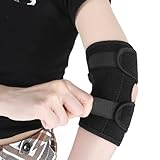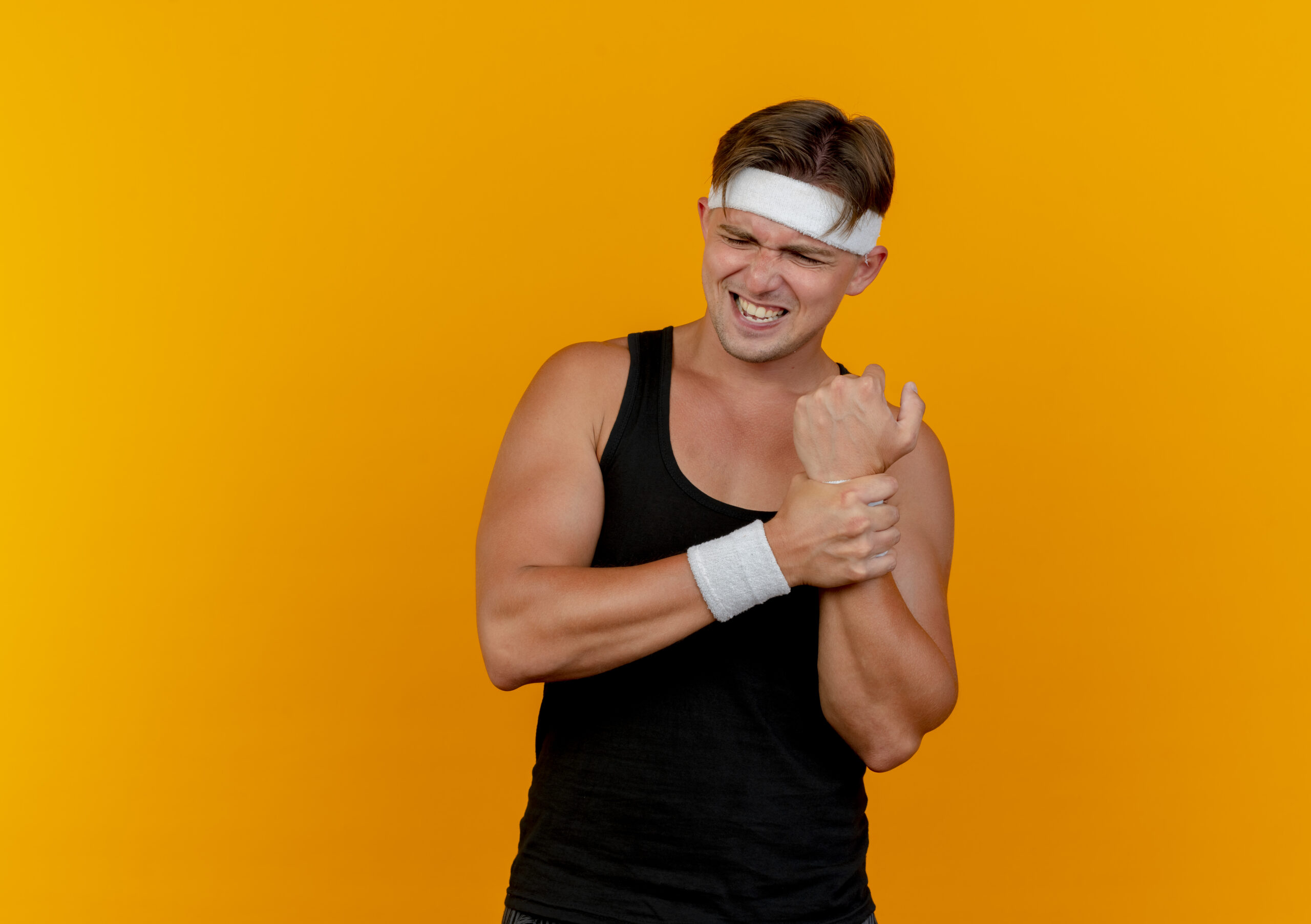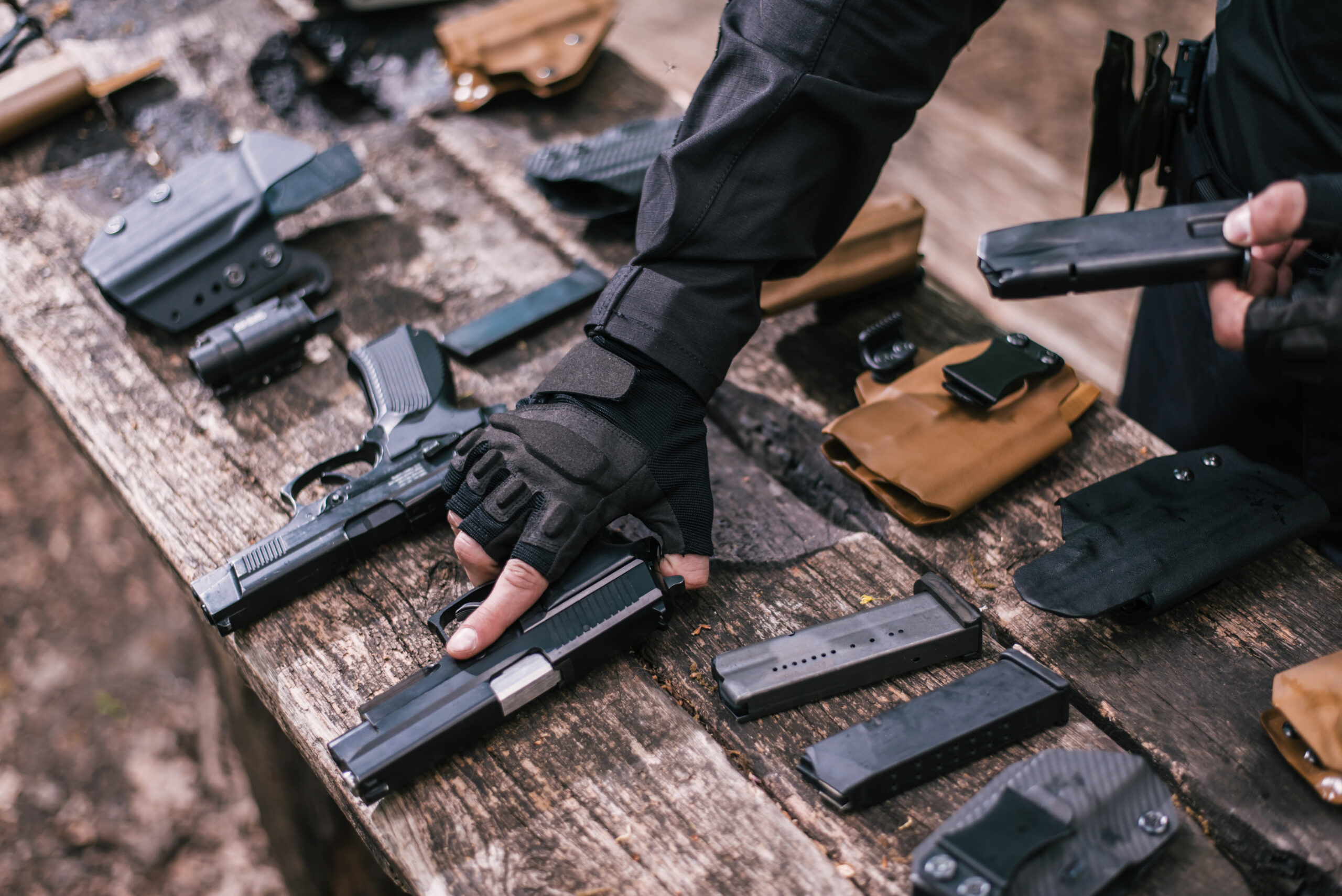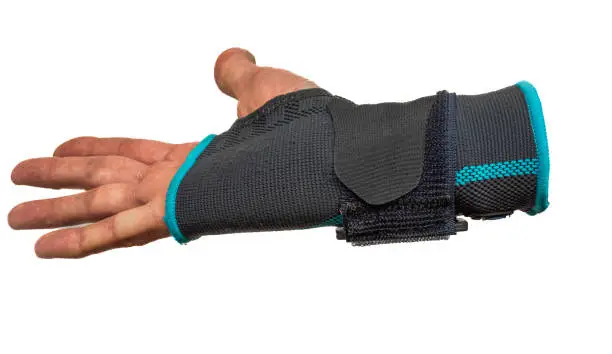A lateral epicondylitis brace, often called a tennis elbow brace, is a supportive device designed to alleviate pain and discomfort from lateral epicondylitis—a condition caused by overuse or strain of the forearm muscles, particularly in activities that involve repetitive arm and wrist motions. This condition can lead to inflammation and microtears in the tendons around the elbow. A good brace applies targeted compression on the forearm just below the elbow, reducing strain on the affected tendons and easing pain. When choosing a brace, look for adjustable straps for a secure fit, breathable material for comfort during extended wear, and durable construction. Some braces feature gel or air pads that provide added pressure to specific areas, enhancing relief. A quality brace can be an essential part of managing symptoms, allowing individuals to maintain daily activities and exercise routines with minimal discomfort while supporting recovery.
Top 10 Best Brace For Lateral Epicondylitis
Sleeve Stars Tennis Elbow Support Strap
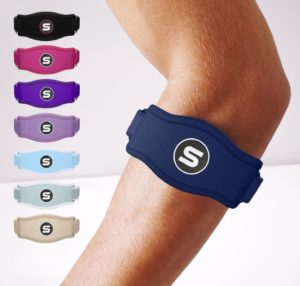
Elbow Brace 2 Pack for Tennis & Golfer's Elbow Pain Relief
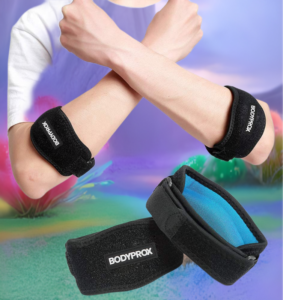
Adjustable Elbow Support for Epicondylitis
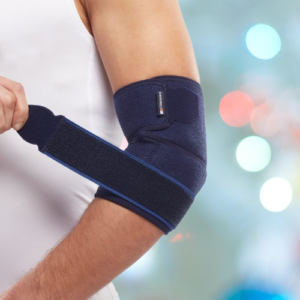
Elbow Brace - Tennis Compression Sleeve
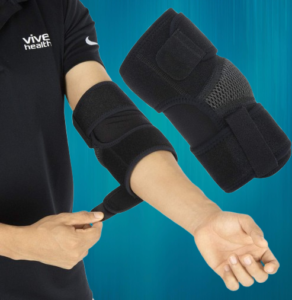
Elbow Brace Support Strap
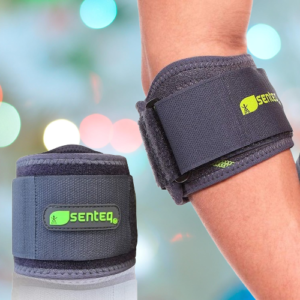
Benefits of Using Best Brace For Lateral Epicondylitis
Lateral epicondylitis, commonly known as “tennis elbow,” is a condition characterized by pain and inflammation on the outer part of the elbow due to overuse or strain on the forearm muscles and tendons. One effective treatment option for alleviating symptoms and promoting recovery is using a specially designed brace. The best braces for lateral epicondylitis offer a range of benefits, helping individuals manage pain, improve function, and accelerate the healing process.
Pain Relief and Reduced Strain
A quality brace provides targeted compression to the affected area, relieving tension on the extensor muscles and tendons that connect to the lateral epicondyle. This reduction in tension helps to alleviate pain by limiting the movement that aggravates the injury. By absorbing some of the shock and strain that would typically stress the tendon, the brace effectively reduces discomfort during everyday activities or sports.
Improved Healing Process
By limiting movements that can worsen the injury, a brace allows the injured tendons to rest and heal more efficiently. This controlled stabilization aids in recovery, as the repetitive motions that initially caused the injury are minimized. Over time, this reduced strain on the tendon allows for better tissue regeneration, decreasing the risk of chronic pain and recurring injury.
Enhanced Grip Strength and Performance
Lateral epicondylitis can weaken grip strength, affecting daily tasks and physical activities. A properly designed brace redistributes pressure across the forearm, stabilizing the muscles and tendons needed for a firm grip. This support improves overall functionality and reduces the risk of re-injury by allowing individuals to continue performing tasks with less strain on the affected elbow.
Increased Confidence and Mobility
Pain and discomfort from tennis elbow can lead to guarded movements and reduced physical activity. Wearing a brace provides reassurance, enabling individuals to move more freely without fear of worsening their condition. This enhanced confidence is crucial for maintaining an active lifestyle, whether in sports or everyday tasks, ultimately contributing to better mental well-being during recovery.
Customizable and Comfortable Fit
The best braces for lateral epicondylitis are adjustable and made of breathable materials, ensuring long-term comfort for users. Many designs are tailored to fit snugly without impeding circulation, allowing wearers to go about their day with minimal discomfort. The adjustability feature also allows for personalized support, which is essential for targeting specific areas around the elbow and forearm.
Cost-Effective and Non-Invasive Treatment Option
Braces provide a cost-effective, non-surgical solution to managing tennis elbow. They can be used alongside other treatments, such as physical therapy and anti-inflammatory medications, enhancing overall recovery. For many individuals, a high-quality brace can prevent the need for more invasive options, such as injections or surgery, making it a valuable investment.
Overall, the best brace for lateral epicondylitis offers both physical and psychological benefits, supporting pain relief, accelerated recovery, improved performance, and confidence, all of which are essential for overcoming this condition effectively.
Importance of Using Best Brace For Lateral Epicondylitis
Using the best brace for lateral epicondylitis, commonly known as tennis elbow, is essential for effective management of this painful condition. Lateral epicondylitis is caused by overuse of the forearm muscles that extend and stabilize the wrist and fingers, leading to inflammation and microtears in the tendons that attach to the lateral epicondyle of the elbow. A high-quality brace can significantly reduce symptoms and aid in recovery by offering targeted support, limiting strain on the affected tendons, and promoting healing.
One of the primary benefits of a good brace is its ability to alleviate pain. A well-designed brace, especially an elbow strap or counterforce brace, applies gentle pressure to the forearm muscles, dispersing the force away from the injured tendon. This reduces the load on the tendon attachment site, alleviating pain and discomfort during daily activities. By relieving this strain, the brace also helps prevent further microtears, which is critical for avoiding long-term complications.
Additionally, the best braces for lateral epicondylitis provide support and stability, reducing stress on the forearm muscles and tendons. By immobilizing the elbow or restricting certain movements, a brace encourages correct posture and minimizes repetitive motions that could exacerbate the injury. Athletes and individuals who engage in activities involving repetitive wrist and arm motions, such as tennis or certain manual labor tasks, benefit from this added stability, allowing them to perform activities with reduced pain and risk of aggravation.
A quality brace also enhances healing and recovery. By controlling movement and supporting the muscles and tendons, the brace promotes blood circulation around the affected area, aiding in tissue repair. This targeted support allows individuals to maintain a degree of mobility without compromising the healing process. Many individuals find that wearing a brace while performing low-impact activities can reduce the risk of reinjury, making it a valuable tool for long-term management.
Moreover, a well-fitted, comfortable brace contributes to user compliance, ensuring individuals wear it consistently for optimal benefit. A poor-quality brace, on the other hand, may lead to discomfort, limiting adherence and ultimately affecting recovery.
Types of Best Brace For Lateral Epicondylitis
Lateral epicondylitis, commonly known as tennis elbow, is a condition characterized by pain and inflammation on the outer part of the elbow due to repetitive stress on the forearm muscles and tendons. Using a supportive brace can alleviate pain, promote healing, and provide stability. Here are some of the best types of braces for lateral epicondylitis:
Counterforce Brace
How it works: This type applies targeted compression just below the elbow, taking pressure off the tendons and relieving strain on the forearm muscles.
Best for: Mild to moderate cases of tennis elbow, especially for people involved in repetitive gripping activities like tennis or gardening.
Advantages: Lightweight, adjustable, and allows full range of motion. Many users appreciate its discreet fit and comfortable design.
Elbow Compression Sleeve
How it works: Made of flexible, breathable fabric, compression sleeves surround the entire elbow joint, providing even pressure across the area to reduce inflammation and improve blood flow.
Best for: Individuals with mild symptoms, or those who experience swelling or discomfort around the entire elbow area.
Advantages: Versatile and comfortable for all-day wear. Some sleeves come with built-in gel pads that offer additional support to the affected area. They’re easy to wear under clothing and promote general comfort.
Dual Strap Brace
How it works: This brace combines a counterforce strap with an additional strap around the upper arm to provide more targeted support.
Best for: Severe cases of tennis elbow, especially for people with chronic or recurring pain.
Advantages: Dual straps allow for customizable compression and stabilization, which can provide superior relief. It’s often more adjustable, giving it a tailored fit for high-impact activities.
Magnetic Elbow Brace
How it works: These braces incorporate small magnets to stimulate circulation and promote healing. Though clinical evidence on magnetic therapy is mixed, some users report pain relief.
Best for: Those seeking alternative therapies alongside traditional support.
Advantages: Combines a standard brace’s benefits with possible magnetic relief, offering both support and potential pain reduction.
Adjustable Air Cushion Brace
How it works: Uses an air-filled cushion that conforms to the shape of your arm and provides even pressure, reducing stress on the tendons.
Best for: Individuals looking for maximum customization in pressure and support, as the air cushion can be adjusted to different levels.
Advantages: Comfortable for long wear and often recommended for those sensitive to rigid braces.
Each type of brace offers unique benefits, and choosing the right one depends on the severity of your symptoms and personal comfort. Consulting a healthcare provider can help tailor the choice to your specific needs.
How to Choose the Right Best Brace For Lateral Epicondylitis?
Choosing the right brace for lateral epicondylitis (also known as tennis elbow) is essential for managing pain and promoting healing. The best brace should provide targeted support and reduce strain on the tendons and muscles of the forearm. Here’s a guide on how to choose the right brace:
Consider the Type of Brace
Counterforce Brace: This is the most common option for lateral epicondylitis. It is a strap that fits around the forearm just below the elbow. The brace works by applying pressure to the muscles of the forearm, relieving strain on the elbow tendons. It’s effective for reducing pain during activities like gripping or lifting.
Elbow Sleeve or Compression Sleeve: These provide more coverage and compression around the entire elbow. They help reduce swelling and improve blood circulation, which can aid in recovery.
Splints: These are rigid braces that limit movement and are useful for severe cases where rest and immobilization are necessary to allow the elbow to heal.
Comfort and Fit
The brace should feel snug but not too tight. It should stay in place without restricting blood flow or causing discomfort. When choosing a brace, consider the following:
Adjustability: Look for a brace with adjustable straps to ensure a customized fit. A poor fit can lead to discomfort or reduced effectiveness.
Breathability: Choose a brace made of breathable, moisture-wicking material to prevent skin irritation and sweating.
Level of Support
The amount of support you need will depend on the severity of your lateral epicondylitis:
For mild to moderate cases, a counterforce strap or compression sleeve may be sufficient.
For more severe pain or acute inflammation, a more rigid elbow splint might be required to immobilize the area and promote healing.
Activity Level
Consider your daily activities when selecting a brace:
If you’re involved in sports or work that requires repetitive arm movements, a brace that allows for some movement (like a counterforce brace) might be ideal.
If you need the brace for rest or during sleep, a more supportive splint could be more appropriate.
Material and Durability
Look for high-quality materials such as neoprene or elastic fabrics. These materials are durable, provide compression, and are comfortable enough for extended wear. The brace should be easy to clean and maintain.
Features of the Best Brace For Lateral Epicondylitis
Lateral epicondylitis, commonly known as tennis elbow, is a painful condition that affects the outer part of the elbow, causing discomfort and weakness in the forearm and wrist. A good brace can be essential in alleviating pain, reducing strain, and promoting healing. Here are the key features of the best brace for lateral epicondylitis:
Comfort and Fit: The most important feature of a brace is its ability to provide comfort while wearing it. It should be lightweight, breathable, and made from soft materials to avoid irritation on the skin. Look for braces with adjustable straps that allow for a custom fit, ensuring that the brace stays securely in place without being too tight or restrictive.
Targeted Compression: A high-quality brace should offer targeted compression around the forearm and elbow. This compression helps reduce swelling and provides support to the injured tendon. Many braces include a strap or pad that applies direct pressure to the muscles and tendons involved in lateral epicondylitis, helping to reduce strain and alleviate pain during movement.
Elbow Stability: A good brace for tennis elbow should offer adequate stability and support to the elbow joint. The brace should prevent excessive movement of the elbow, which can exacerbate the condition. This may be achieved through a rigid or semi-rigid structure, which helps to keep the elbow in a neutral position, limiting stress on the tendons.
Pain Relief: Many braces feature padding or gel inserts that help with pain relief by reducing pressure on the inflamed area. Some also incorporate thermal therapy features, such as heat retention or cold packs, which can be beneficial for managing acute inflammation and pain.
Breathability and Moisture-Wicking: Since lateral epicondylitis often requires prolonged use of a brace, choosing one made of breathable, moisture-wicking fabric is crucial. This feature helps to keep the skin dry and comfortable, reducing the risk of chafing and irritation.
Ease of Use: The brace should be easy to put on and remove, even with one hand. Velcro or adjustable straps are common in the best braces, allowing for quick application and adjustment without complicated fastening systems.
Durability: A high-quality brace should be durable and able to withstand regular use without losing its effectiveness. Look for braces made from high-quality materials that retain their elasticity and support over time.
Discreetness: A discreet design that can be worn under clothing is another important feature. Many of the best tennis elbow braces are slim and low-profile, allowing you to wear them throughout daily activities or at work without drawing attention.
How to Wear and Use Best Brace For Lateral Epicondylitis Properly?
Lateral epicondylitis, commonly known as tennis elbow, is a painful condition caused by the overuse of the forearm muscles and tendons near the elbow. Wearing a brace can help alleviate the pain, promote healing, and prevent further injury. Here’s how to properly wear and use the best brace for lateral epicondylitis.
Choose the Right Brace
Selecting the appropriate brace is key to its effectiveness. The most common types of braces for lateral epicondylitis are:
Counterforce Brace: These apply pressure to the forearm muscles to reduce strain on the tendons near the elbow.
Elbow Sleeves: These are soft sleeves that provide compression and warmth to the entire elbow joint.
Wrist Splints: Sometimes, immobilizing the wrist can help reduce tension on the forearm tendons.
For the best results, choose a brace based on your specific needs and comfort. Counterforce braces are particularly effective for reducing strain on the tendon, while elbow sleeves offer more general support.
Proper Application
When applying the brace, ensure it is positioned correctly:
Counterforce Brace: Place the brace just below the elbow, over the forearm muscles (approximately 2-4 inches below the elbow). Tighten it until you feel slight pressure but not discomfort. It should be snug, but not so tight that it cuts off circulation.
Elbow Sleeves: Simply slide the sleeve over your elbow, ensuring it fits snugly and covers the joint. The sleeve should offer a compression fit without causing discomfort.
Wrist Splints: If using a wrist splint, position it so that your wrist is in a neutral position (not bent up or down), and fasten the straps to hold it firmly but not too tightly.
Wear It Correctly
Wear the brace during activities that may aggravate the condition, such as lifting, playing sports, or typing. You can also wear it while resting to support the healing process. Generally, wear the brace throughout the day, but remove it at night to allow for circulation and avoid stiffness.
Combine with Other Treatments
While the brace helps alleviate pain, it’s essential to combine it with rest, ice, and physical therapy exercises. Avoid activities that exacerbate the pain, and apply ice to the elbow for 15-20 minutes several times a day to reduce inflammation.
Listen to Your Body
The brace should provide comfort and relief, not cause additional discomfort. If you experience increased pain, swelling, or skin irritation, adjust the brace or consult a healthcare professional for a better fit.
How to Care for Best Brace For Lateral Epicondylitis?
Caring for the best brace for lateral epicondylitis (tennis elbow) involves proper use, cleaning, and maintenance to ensure effectiveness and longevity.
Proper Fit: Ensure the brace fits snugly but not too tight. It should provide compression over the forearm muscles, where the tendons attach to the elbow, without restricting blood flow. Adjust the straps to ensure comfort and support.
Wear it Correctly: Wear the brace during activities that trigger pain, especially while lifting, gripping, or playing sports. It’s best to wear it during physical exertion and remove it when resting.
Cleaning: Most braces are made from breathable materials that can be cleaned. Hand wash it with mild detergent and warm water. Air-dry the brace completely before using it again to prevent odor or deterioration.
Storage: When not in use, store the brace in a cool, dry place, away from direct sunlight or heat sources to prevent material breakdown.
Monitor Comfort: Regularly check the fit to ensure it’s still comfortable. If you experience increased discomfort, consult a healthcare provider, as this may indicate the need for adjustments or a different type of brace.
By following these care tips, you can extend the lifespan of your brace and maximize its effectiveness in managing lateral epicondylitis.











![Tennis Elbow Brace with Compression Pad [1 Pack] – Adjustable Elbow Strap for Recovery and Support for Tennis & Golfers Elbow, Pain Relief for Tendinitis, Lateral & Medial Epicondylitis](https://m.media-amazon.com/images/I/31ZwsNkjJ9L._SL160_.jpg)





